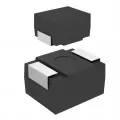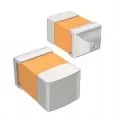OUTLINE:
A Decoupling Capacitor That Beginners Can Understand
 290
290Decoupling capacitors, also known as bypass capacitors, are typically placed near components within a circuit to filter out high-frequency noise, ensuring stable and clean voltage to guarantee the normal operation of components.
The Purpose of Decoupling Capacitor
In a typical circuit system, multiple loads draw power from the same power supply.
Ideally, the power supply for a load should look like this:
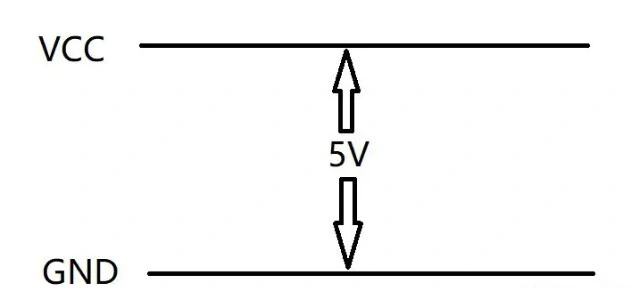
Image Source: Sohu
However, the dynamic current absorption by various loads on a circuit board leads to unstable power supply voltages, resulting in waveforms like this:

Image Source: Sohu
This waveform illustrates how various high-frequency noises are superimposed on a 5V DC supply due to fluctuations caused by device operations, effectively "coupling" AC noise onto the DC 5V supply.
This AC-coupled DC power supply not only affects the circuit's performance within the load area but also impacts the operation of other loads connected to the same VCC, potentially causing issues in their circuit operation.
The solution is to add a small-capacity capacitor across the power supply.
From a power supply perspective, without a decoupling capacitor, the waveform resembles the one on the left. After adding a decoupling capacitor, it transforms into the waveform on the right, where the power supply voltage waveform becomes cleaner. This capacitor's role is termed decoupling, as it removes noise coupled onto the clean DC, hence it's referred to as a decoupling capacitor or bypass capacitor. This capacitor ensures that only clean DC is supplied to subsequent circuits.
Each load in the entire system should have its own decoupling capacitor.
Regarding the power input end, a decoupling capacitor is also added for input filtering to compensate for insufficient load filtering.
Difference Between a Decoupling Capacitor and a Capacitor
While both capacitors store electrical energy, decoupling capacitors serve a specific purpose. Regular capacitors provide a reservoir of energy for circuits, helping to maintain voltage levels. Decoupling capacitors, however, focus on filtering out rapid fluctuations in voltage (noise) on the power supply lines. They act like tiny rechargeable batteries, supplying quick bursts of current to nearby components, bypassing the main power supply and preventing noise from affecting circuit operation.
Decoupling Capacitor Applications
Decoupling capacitors play a vital role in both analog and digital circuits, but the specific reasons for their use differ slightly:
In Analog Circuits:
Noise Reduction: Rapid voltage fluctuations (noise) on the power supply lines can introduce unwanted signals into analog circuits, affecting their accuracy and fidelity. Decoupling capacitors act as tiny noise filters, bypassing these fluctuations and providing a cleaner, steadier voltage supply to the circuit. This helps maintain the precise signal levels crucial for analog operations like audio amplification or sensor signal processing.
Power Supply Stability: Analog circuits often require stable DC voltage levels for proper operation. Decoupling capacitors act as mini energy reservoirs, supplying quick bursts of current to the IC when it experiences sudden changes in power demand. This helps smooth out voltage dips and surges on the power supply, preventing them from affecting the analog circuit's performance.
In Digital Circuits:
Reduced Ground Bounce: Digital circuits frequently switch between high and low voltage states very rapidly. This rapid switching can cause momentary voltage drops on the power supply lines, known as ground bounce. Decoupling capacitors act as local current reserves, providing the necessary power surge during these transitions. This minimizes ground bounce and ensures the digital circuit receives a clean, stable voltage supply for reliable operation.
EMI Reduction: Fast switching in digital circuits can also generate electromagnetic interference (EMI) that can disrupt other nearby circuits. Decoupling capacitors help to reduce EMI by acting as a local bypass for high-frequency noise currents, preventing them from radiating out and affecting other components.
Selecting a Suitable Decoupling Capacitor
Understanding what decoupling capacitors are leads to questions:
How large a capacitance is needed to achieve decoupling effects?
With so many different types of capacitors available, how do we choose the most suitable one?
Why do we often see multiple capacitors of varying capacitances and types working together for a single power supply pin in many circuits?
Analysis
For a chip (such as an FPGA/MCU), multiple capacitors of different capacitance values and types are paralleled to achieve effective decoupling.
The capacitors used for decoupling (regardless of type) serve to rapidly supply current during transient disturbances on power lines. They possess not only capacitance but also two impedances that hinder current flow: Equivalent Series Resistance (ESR) - presents a fixed impedance regardless of frequency; Equivalent Series Inductance (ESL) - its impedance increases with frequency. The values of these three parts are heavily dependent on capacitor type, capacitance, and packaging.
As the most commonly used decoupling tool, ceramic capacitors have low ESR and ESL (and are inexpensive). Tantalum capacitors come next, offering moderate ESR and ESL but a relatively high capacitance/volume ratio, making them suitable for higher-value bypass capacitors to compensate for low-frequency variations on power lines. Larger packaging for ceramic and tantalum capacitors typically means higher ESL.
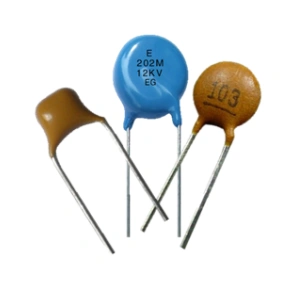
Image Source: EE Power
How to Design the Placment of Decoupling Capacitor
The effectiveness of a decoupling capacitor hinges on its location. The ideal spot is as close as possible (physically) to the power pins of the integrated circuit (IC) it's protecting. This minimizes the distance the current needs to travel, ensuring the capacitor can respond swiftly to voltage fluctuations and effectively suppress noise before it disrupts the IC.
Where to Buy Quality Capacitor
Ceramic capacitors are always used as decoupling capacitors. Chipsmall has more than 1 million ceramic capacitors to choose from.
Chipsmall Limited consists of a professional team with an average of over 20 years of expertise in the distribution of electronic components. Based in Hong Kong, we have already established firm and mutual-benefit business relationships with customers from Europe, America and South Asia, supplying obsolete and hard-to-find components to meet their specific needs.
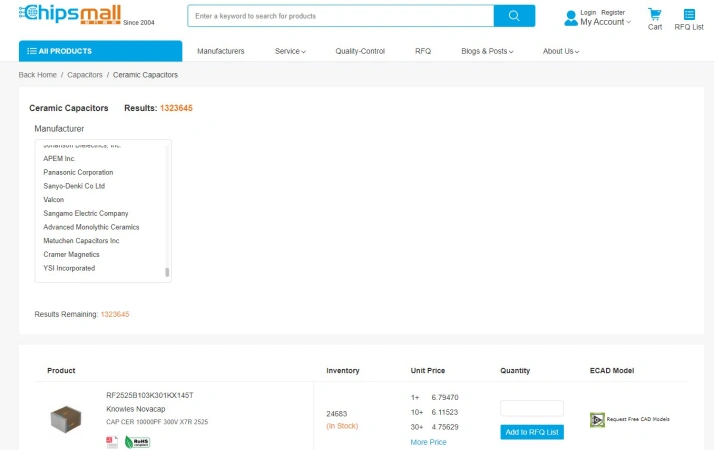
By reading this article, I hope you can better understand decoupling capacitors and apply them reasonably in the design of actual electronic equipment to ensure the stability and performance of the circuit.

Disclaimer: The views and opinions expressed by individual authors or forum participants on this website do not represent the views and opinions of Chipsmall, nor do they represent Chipsmall's official policy.

share this blog to:



